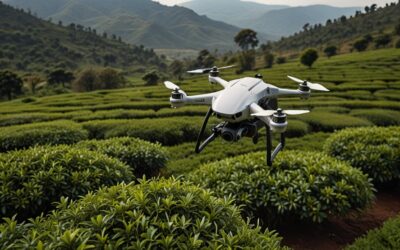A new study by think-tank Ember sheds light on Central Europe’s promising potential to substantially escalate its clean energy production by harnessing an innovative technology called agrivoltaics.
This method involves the integration of solar panels with food crops, presenting a unique opportunity to simultaneously generate renewable energy and enhance agricultural productivity.
The study marks a significant advancement in the quest for sustainable energy solutions. It suggests that through the strategic placement of solar panels in agricultural settings, Central Europe could potentially triple its current clean energy output. The regions’ ample farmland, combined with suitable climatic conditions, provide an ideal backdrop for deploying this solution.
Agrivoltaics is a burgeoning technology that capitalises on the symbiotic relationship between solar energy systems and agriculture.
Solar panels, when positioned above crops, have been shown to provide multiple benefits. They not only generate electricity but also offer shade for crops, which can reduce water evaporation and protect plants from extreme weather conditions. This dual-use of agricultural land can lead to increased crop yields while simultaneously contributing to national and regional clean energy targets.
The study highlights the significant advantages for farmers willing to adopt agrivoltaic systems. By integrating solar panels with their agricultural practices, farmers stand to gain an additional revenue stream from the electricity produced while maintaining, or potentially increasing, their crop yields. This could provide a much-needed financial boost for the agricultural sector, which often faces economic pressures and variable market conditions.
Moreover, the adoption of agrivoltaic technology could play a pivotal role in helping Central European countries meet their carbon reduction goals and transition towards more sustainable energy systems. Given the growing global emphasis on reducing greenhouse gas emissions, the findings of the study could catalyse policy support and investment in this innovative approach to clean energy production.
The potential success of agrivoltaics in Central Europe could also serve as a model for other regions with similar agricultural and climatic conditions. As the global community grapples with the challenges of energy security and climate change, the insights from this study could inspire broader adoption of agrivoltaic systems worldwide.




